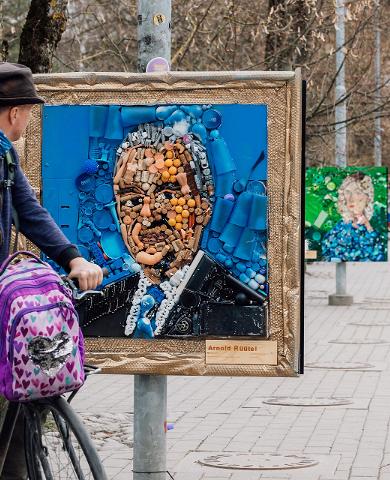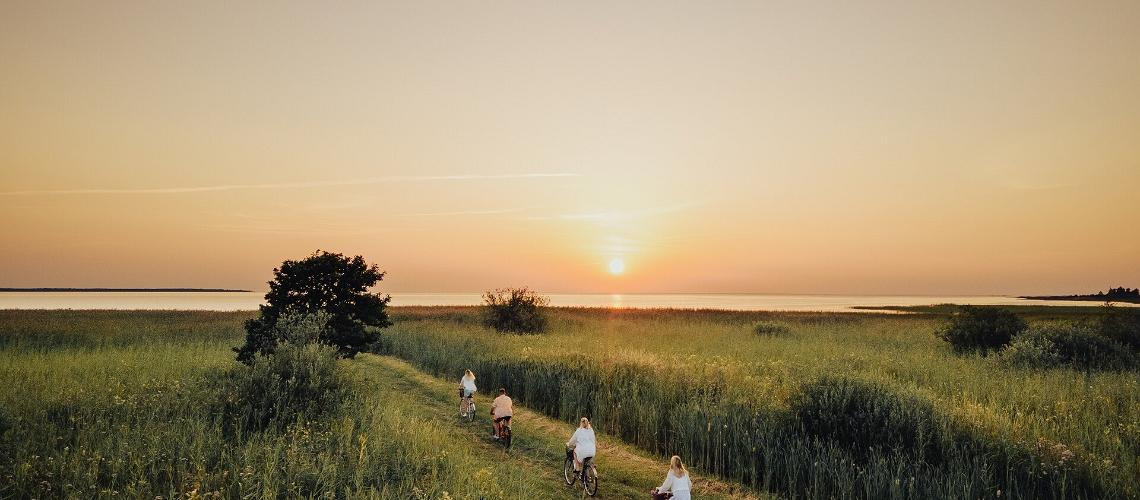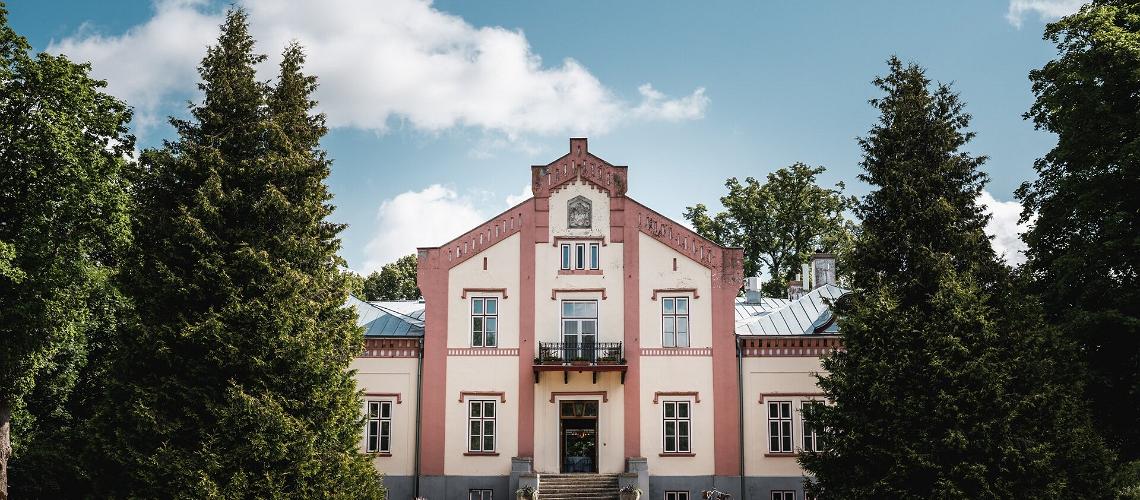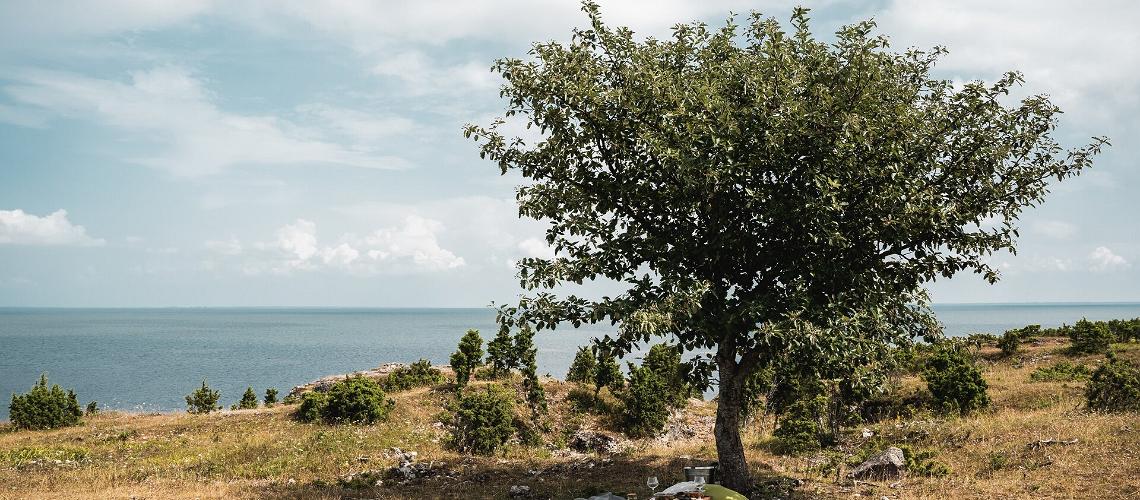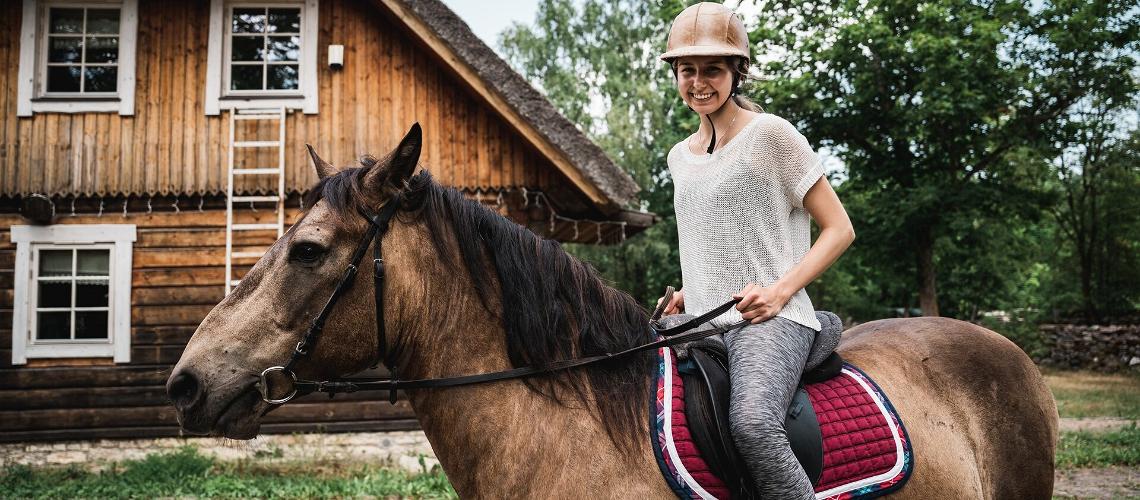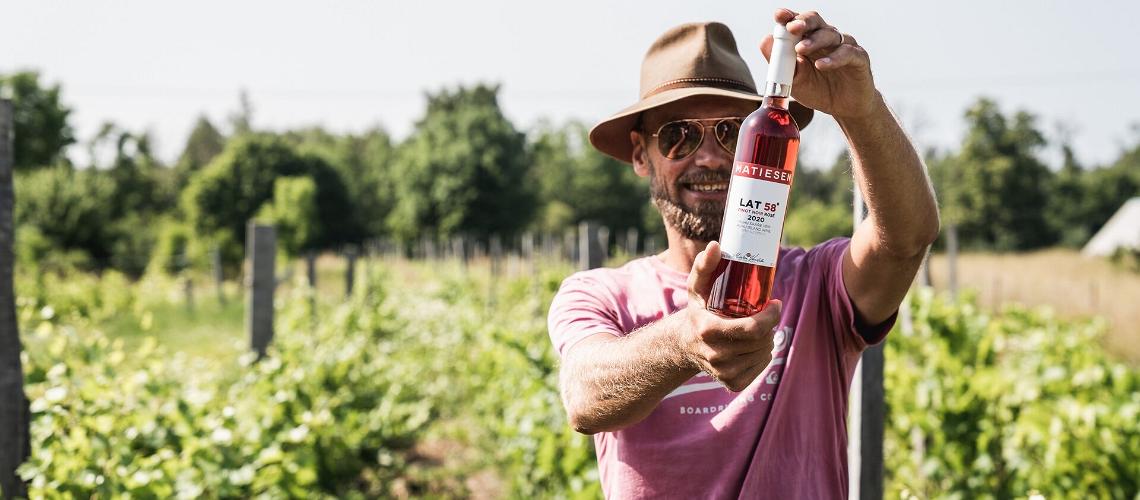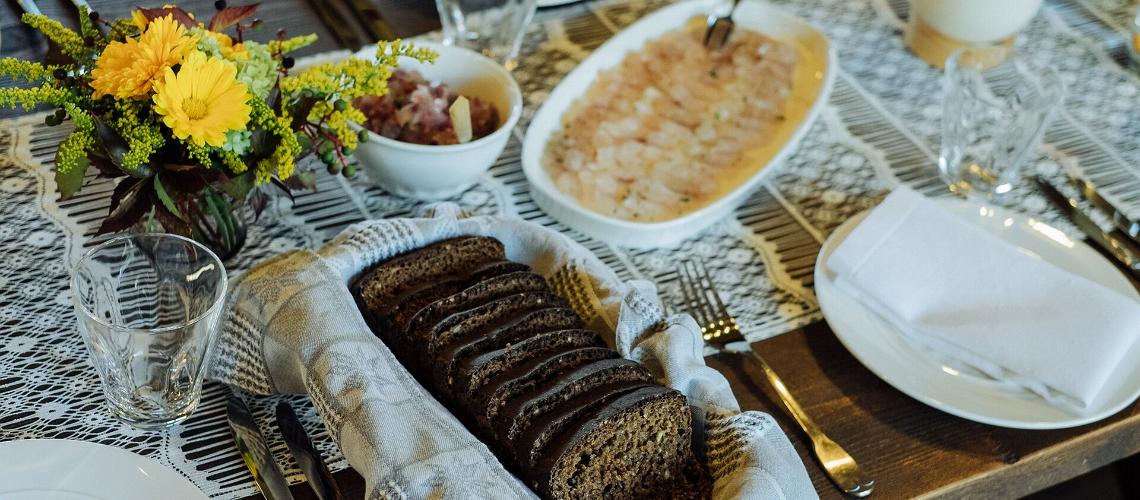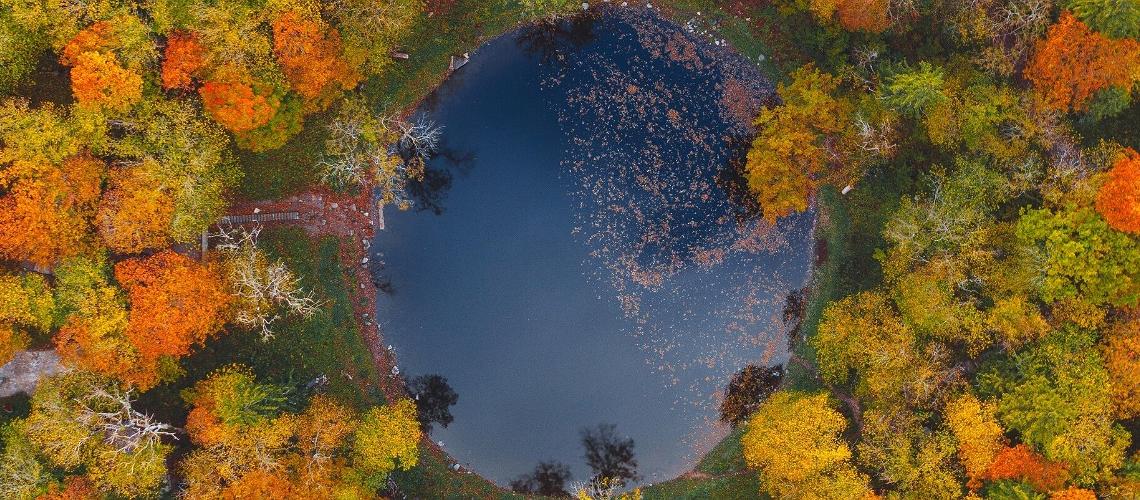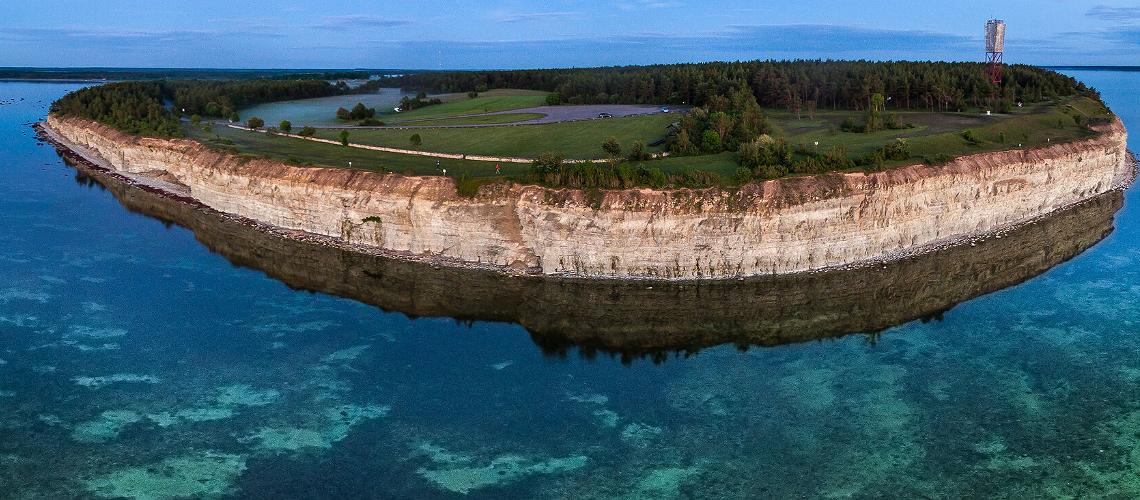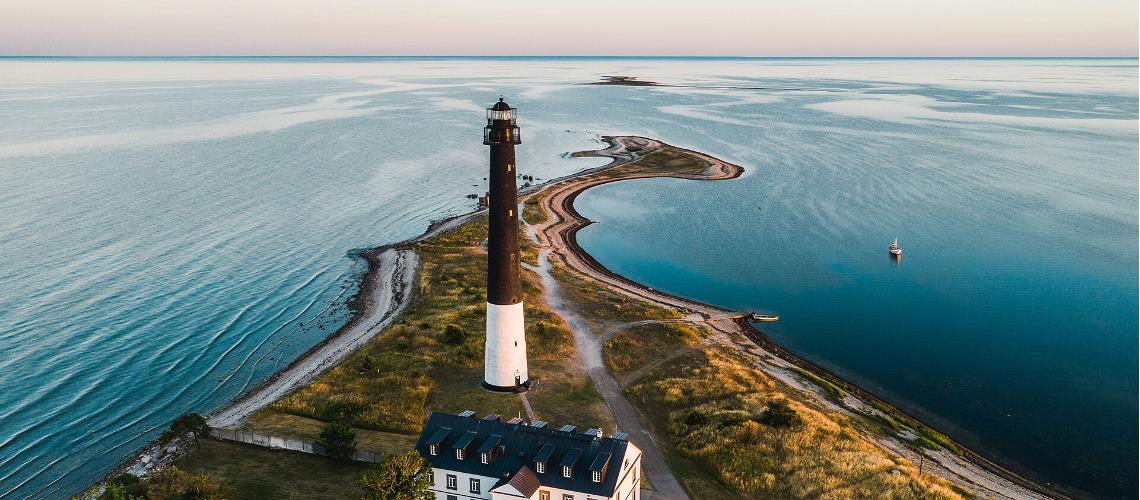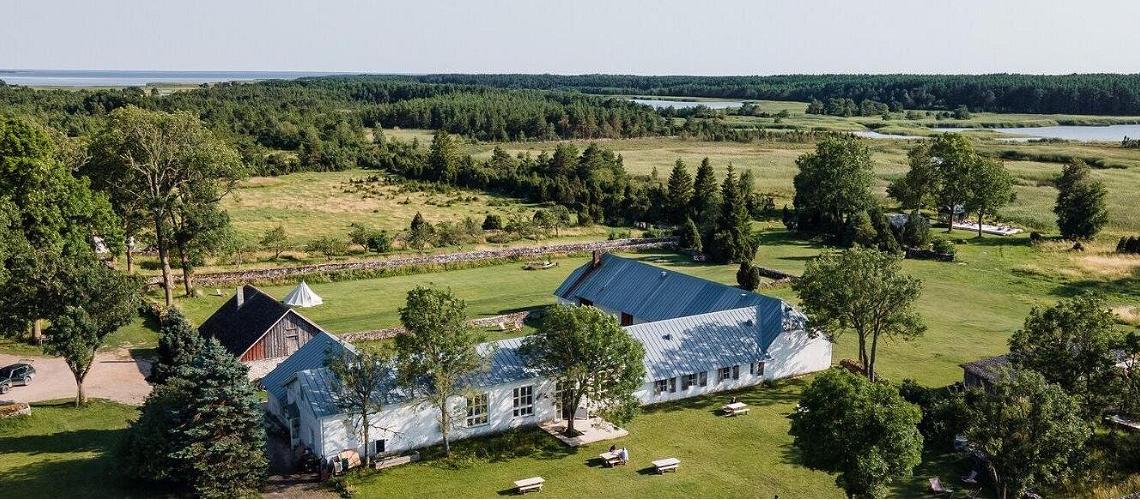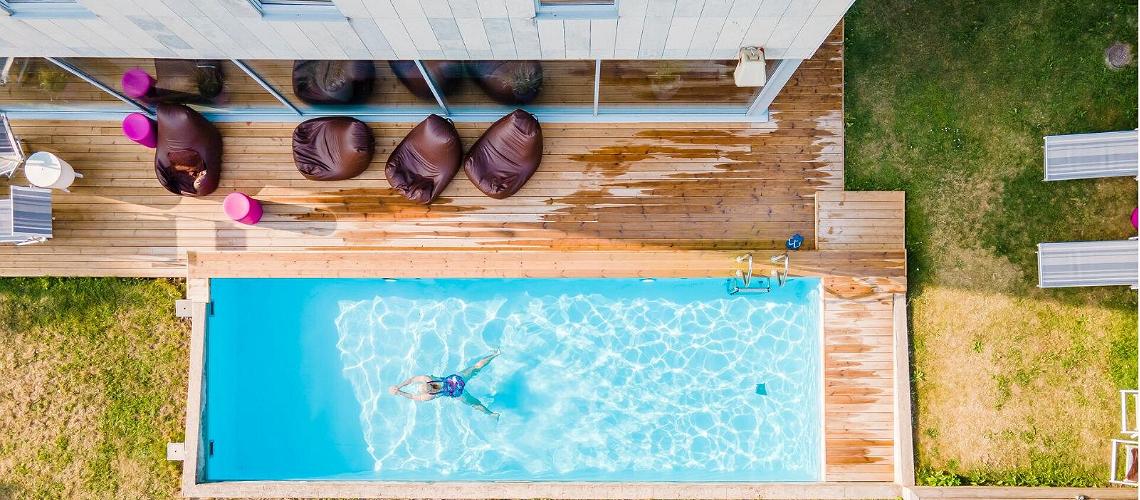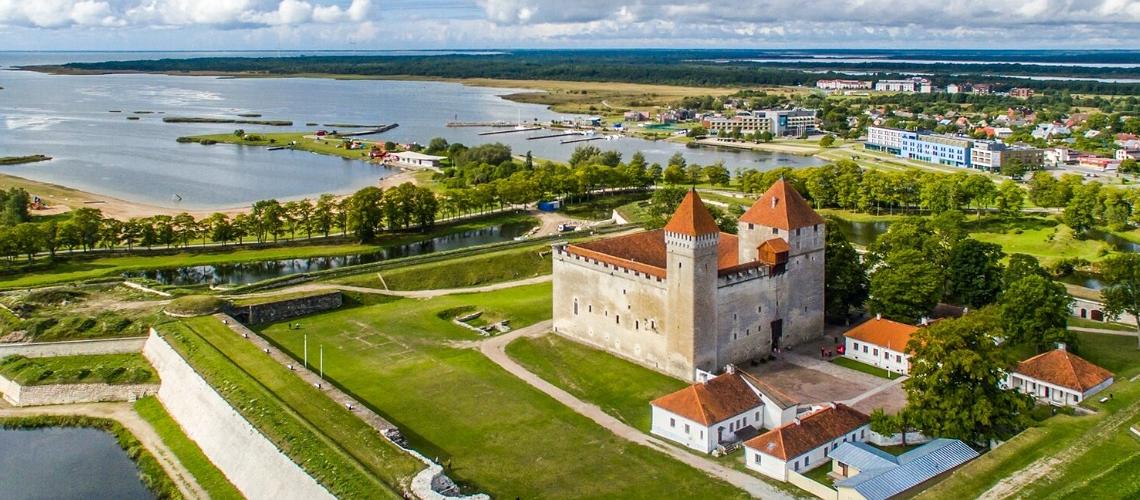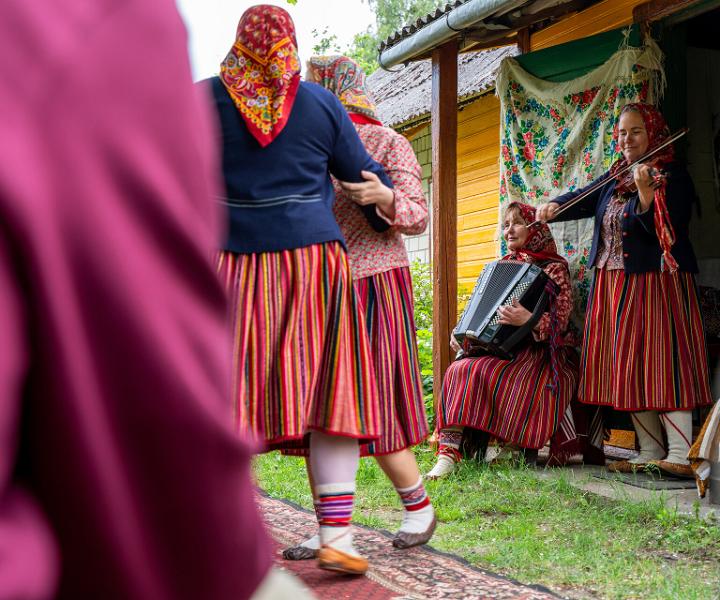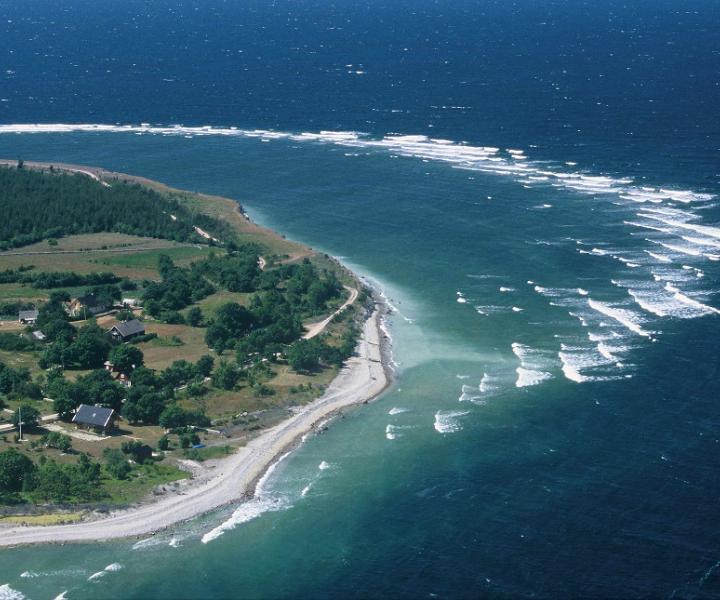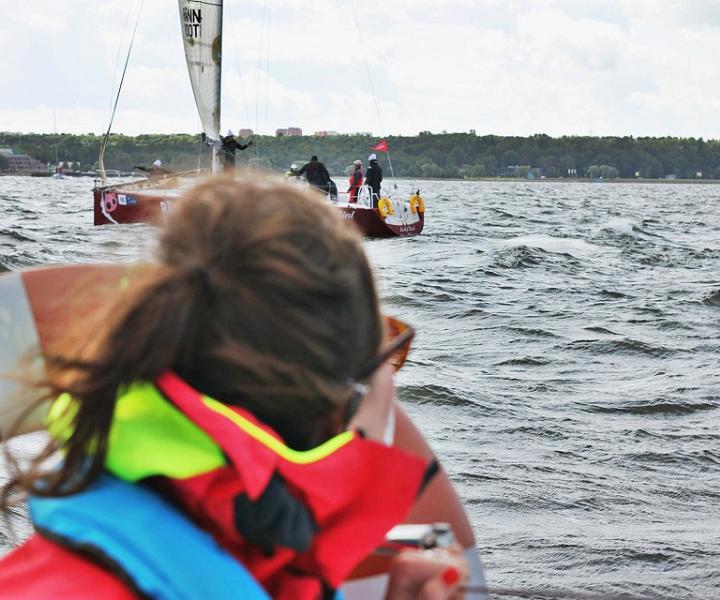An island of tradition and innovation
Like many Estonian islands, Saaremaa has its own unique traditions that have lasted over the centuries, thanks to its remote location and the ingenuity of the local people.
At festive events, you'll see islanders wearing their colorful folk costumes. For centuries, home-brewed beer and baked bread have been made in local homes, and they still are today. Local young people often follow in their parents' footsteps and become fishermen and -women, contributing to a tradition of sustainable fishing. From early spring to late autumn, smoked fish can be enjoyed on Saaremaa and Muhu, and the catch of the day is a popular dish on the restaurant menus of both islands.
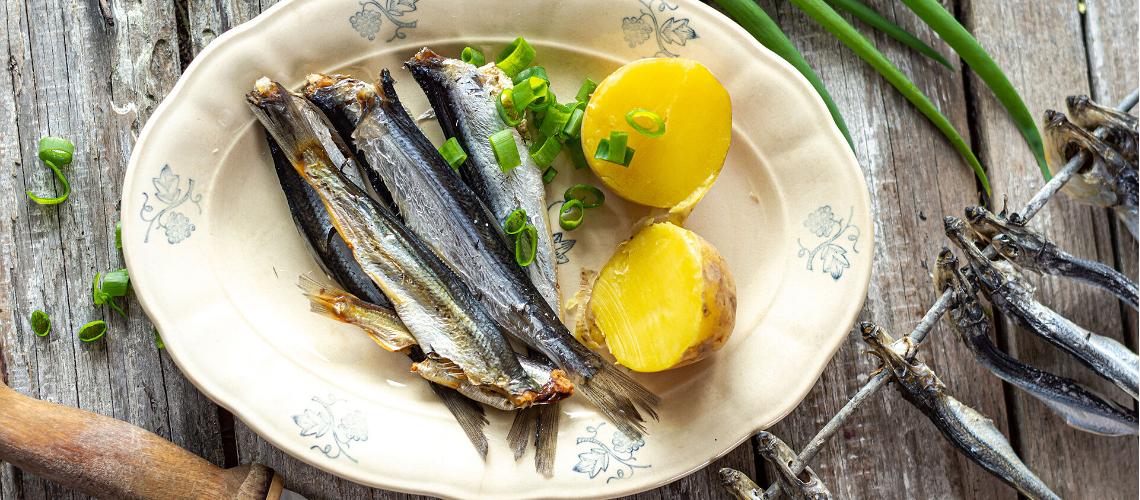
Sustainably caught fish is a prominent feature on many local menus.
Photo by: Maris Sepp, Visit Saaremaa
As subsistence lifestyles have decreased, islands have looked for innovative ways to adapt their traditions to a sustainable, circular economy. For example, Lahhentagge Distillery gives new life to Christmas trees by making them into a tonic. Their spruce-flavored tonics are made from Christmas trees from Kuressaare and Pärnu in Estonia and Helsinki and Loviisa, Finland. Popular events also put an emphasis on sustainability, like the music festival I Land Sound. They have received the first "A Greener Festival: Highly Commanded 2023" certification in the Baltics after being evaluated on 11 different areas affecting the environment, such as transport, energy and water use, waste, food, and the local ecosystem.
By staying a few extra days on Saaremaa and Muhu, you know your slow travel will contribute to the local economy. Not sure what to do beyond a weekend? Read on for ideas to fill four days — or more! — on Estonia's largest island.
Day 1: Fine dining and culture on Muhu Island
The ferry to Saaremaa runs from the mainland to Kuivastu on Muhu Island. This island may be small, but it is worth staying here for a day to experience the local culture. You can get around the island by car, but all the sights are easily accessible by bicycle.
The pearl of Muhu is the village of Koguva with its long stone walls, a striking example of Estonian farm architecture. This village was once home to free peasants who never worked as serfs for wealthy landowners. Now you can learn more about the history at the village's farm museum. Nearby is one of the oldest churches in Estonia — St. Catherine's Church. Families travelling with kids and animal lovers will want to stop at the ostrich farm or the Tihuse equestrian tourism farm. As you travel around the island, pay attention to the doors — they may be painted in bright colors and covered with magical symbols for protection. This ancient tradition has been gaining popularity once again.
Pass by the 300-meter-long Üügu Bluffs on the northeastern coast of Muhu for a photo session with a romantic seascape as the backdrop. If you want to spend the night somewhere special, the Üügumetsa Tree House is next to the bluffs. From the windows, you can take in stunning views of the forest and sea. The Bottengarn Boutique Hotel in Koguva also offers stunning seaside views, and you can even stay in one of their two floating houses.
A stop at Pädaste Manor is a must when passing through Muhu on the way to Saaremaa. This centuries-old manor house is Estonia's only five-star spa hotel outside Tallinn. Here is where you'll find the MICHELIN-recommended Restaurant Alexander. They offer New Nordic cuisine inspired by the cooking traditions of Muhu and the surrounding islands, valuing local traditions and seasonal ingredients. The highlight of Restaurant Alexander is the seven-course Islands tasting menu.
Luscher & Matiesen, the northernmost wine tourism village in the world, also happens to be located on Muhu. The first official wine from Muhu Island Winery, a rosé called Algus, was made from the 2016 harvest. A restaurant is open to visitors, offering gourmet cuisine and wine tasting. If you book in advance, you can attend a master class on growing grapes or stay here overnight.
Muhu is also famous for its black bread — stop by the bakery in the village of Liiva, where you can buy it fresh from the oven.
Day 2: Viking history and iconic windmills
In Estonian, Saaremaa means "island land" — a fitting name for the largest island in Estonia and the fourth largest in the Baltic Sea. It is a destination for travelers longing for peace and tranquillity, for time to sit back and listen to the waves lap the shore and breathe in deep the scent of juniper.
After crossing the bridge from Muhu, stop by Koigi Bog. The bog lakes are perfect for SUP fans. One of the bog's smallest lakes is called Lake Naistejärv (Women's Lake) is made up of women's tears, including those of Piret, the wife of Suur Tõll, Saaremaa's legendary giant hero.
Kaali Crater is also a site of legends. Approximately 7,500 years ago, a meteorite fell in the center of Saaremaa, causing enormous damage to local flora and fauna. The meteorite caused destruction comparable to the explosion of a small atomic bomb, so you can only imagine what the population of Saaremaa would have thought, having no scientific explanation for the massive light in the sky. The crater, 110 meters in diameter and 22 meters deep, eventually became a lake. Lake Kaali was surrounded by a massive stone wall, near which a large number of bones of domestic animals were found, indicating that it was a sacrificial site.
On the north side of the island are the Panga Cliffs. At its highest point, the cliff is 21.3 meters tall and the entire formation extends approximately 2.5 kilometers. At the highest point of the Panga cliffs sits an ancient sacrificial stone, where locals once brought gifts to the sea. Now it is an ideal picnic spot where you can admire the beautiful sunset, watch birds, and swing on the village swing.
Not far from the cliffs, you'll find Tukhkana, one of the best beaches on the island. A boardwalk passing through a pine forest will lead you to a wide sandy beach. Unlike the beaches in the southern part of Saaremaa, the water is deep close to shore. The surrounding forests abound in mushrooms and berries.
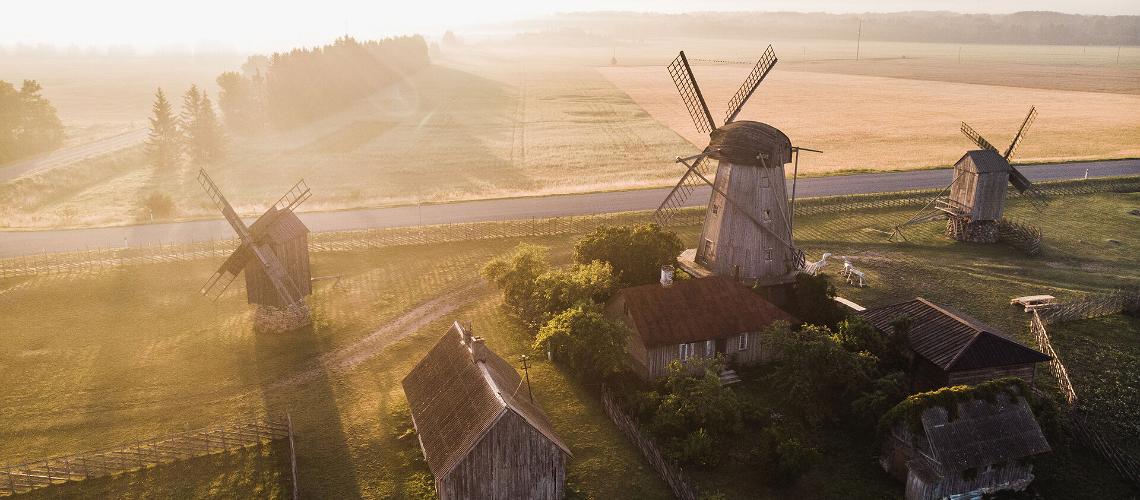
Discover the history behind the Angla windmills at this charming agricultural museum.
Photo by: Priidu SaartFor an up-close look at Saaremaa's rural traditions, stop by one of Saaremaa's most Instagenic locations — the Angla windmills. The museum introduces local folk culture and displays agricultural equipment from times past. It's a perfect place for a picnic, and kids will love interacting with the farm animals.
Travel even further back in time to the ancient settlement of Asva and get acquainted with the Viking culture of Saaremaa. In addition to an adventure park with a petting zoo, there is a Viking fort with a forge and an armory to test your skills. During the summer, various events are held in the courtyard and on the stage of the fort. On the western side of the island, you can stop by the site of the Salme burial ships, where archaeologists uncovered the oldest Viking ship burial in the world. A concrete sculpture and information board mark the place where the boats once lay.
After visiting the Salme ship burial site, continue on to the Sõrve Peninsula. In the summer, you can climb to the top of the lighthouse. Feel the wind in your face and imagine what the Vikings would have felt as they approached the shore.
End the day with a stay at an eco-friendly hotel that offers luxury accommodation and seasonal meals using local ingredients. Pilguse Residency is located in the Pilguse Manor building, which dates back to 1558. The estate is set on 90 hectares of wild nature, near lakes and an endless coastline. Fabian Gottlieb Thaddeus von Bellingshausen, the famed navigator and Antarctic explorer, spent his childhood here.
More unexpected places to stay
- An absolute hit among Saaremaa's hotel establishments is an overnight stay at a mill. The mill is located on the Sõrve Peninsula, where the beach is washed by calm waves, and the sun shines 2,200 hours a year.
- Kaavi Hunting Lodge offers accommodation in Saaremaa, on the Sõrve spit, with a sandy beach and a picturesque view of the sea. On the pier, there is a small swimming pool with a sauna.
- Onni Villa is built on the ruins of an old smithy. Tagalaht Bay, which stretches in front of the house and has beautiful sandy beaches, has become a favorite place for surfers. The villa is perfect as a holiday destination for a family, a group of friends or couples.
- Mia Glamping tents in Orissaare not only have all the necessary amenities but also heated wooden floors, rosewood furniture, carefully selected mattresses, beds, linens and luxury furnishings.
- Läätsa Holiday Homes are located away from city noise, a 20-minute drive from Kuressaare, in the seaside village of Läätsa, between junipers and pine trees.
Day 3: Seal spotting in Vilsandi National Park
Saaremaa, together with Estonia's other western islands, belongs to the UNESCO "Man and the Biosphere" program. The environment here has been preserved for centuries, and the unique traditions of hard-working islanders here have received special recognition precisely because they have been able to live in harmony with nature.
There are 38 flowering orchid species in Estonia, 36 of which grow on Saaremaa. This makes Western Saaremaa particularly popular among flower enthusiasts in spring. Saaremaa is also a paradise for birdwatchers in autumn and spring as birds stop by during their annual migrations.
Saaremaa is home to one national park here – Vilsandi National Park – which is located in the oldest protected area in the Baltics. Vilsandi is home to seal rookeries and a nesting site for more than 247 bird species and seal rookeries. Besides Vilsandi National Park, Saaremaa has many nature and landscape reserves, nearly twenty protected parks and a few dozen nature and hiking trails.
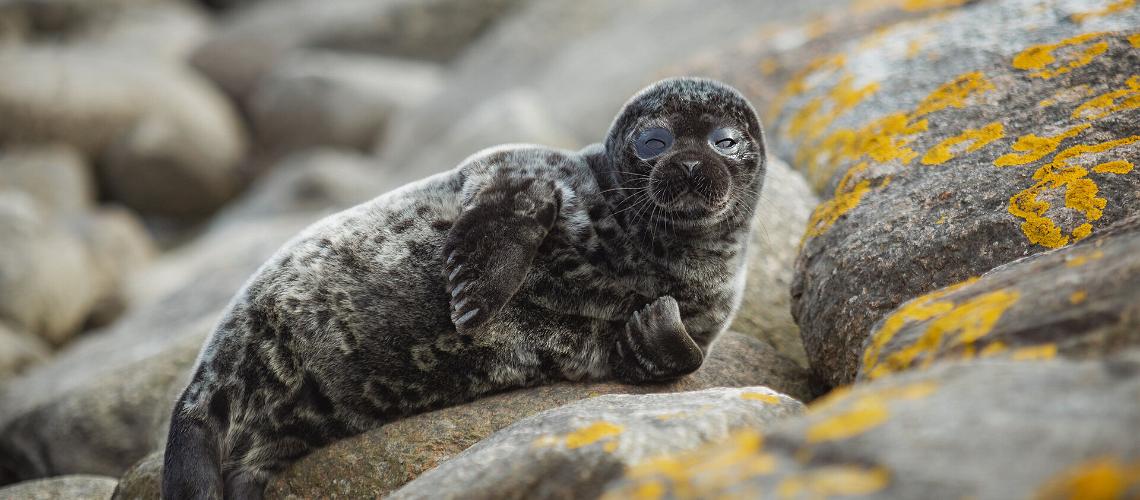
Seals are Vilsandi National Park's most charismatic residents.
Photo by: Valmar Voolaid, Visit Saaremaa
Before exploring the islands of Vilsandi National Park, stop at the Visitor Center in Loona and check out their collection of fossils and an exhibition introducing the park's history. You can use the nearby grilling sites or begin your hike at the trailhead of the Loona-Harilaiu Nature Trail. You can explore the surrounding islands and lagoons by boat or kayak. You are likely to see seals lying on the beaches - there are a lot of them here. On Vilsandi Island, tourists will find an old lighthouse, which was built in 1809.
It is worth noting that the ferry departs to Vilsandi (Papisaare-Viikati) only three times a week during the summer, and seats are limited. Make sure to buy tickets in advance.
Day 4: Spa day in Kuressaare
When medicinal clay deposits were discovered in Kuressaare (translated from Estonian as the "Island of Cranes"), the city developed a spa culture on par with the most famous resort towns of Estonia. Spa traditions have been preserved here to this day, earning the island the nickname "Spa-remaa."
Those looking for relaxing, therapeutic spa services and families who have come to enjoy the sauna centers and swimming pools will definitely find a suitable range of services here. The largest complexes on the island are the Grand Rose Spa, Go SPA, Johan Spa, Arensburg Spa, Asa Spa Hotel, and the newest, Meri Seaside Hotel & Spa.
After a morning at the spa, stroll through Kuressaare's charming Old Town, enjoying the architecture, quaint cafes, handicraft shops, and galleries. Along the main pedestrian street, there are tiny two- and three-storey houses with bars and restaurants. This road eventually leads to the main attraction — Kuressaare Castle.
Kuressaare Castle is one of the best-preserved defensive fortifications in Estonia. Nowadays, it houses a historical museum.
Family-friendly attractions
The WOW Family Attraction and Interactive Leisure Centre consists of five areas. In the active area, you can run, jump and climb; in the water area, you dabble in water play; in the energy area, you can discover different forms of energy around us; and in the simulators, you can experience virtual reality. There is also a children's area for guests aged 2–6.
Older children will appreciate a visit to the alternative history center Thule Koda. In Greek mythology, Ultima Thule was the name of an island shrouded in legends, which was considered the northernmost land. The term has also been used to refer to remote and mysterious places in other mythologies and legends. Why shouldn't this distant island be Saaremaa? The exhibitions at the Center for Alternative History are executed in a humorous and slightly ironic manner, and their motto is: "Don't believe everything they show you!"
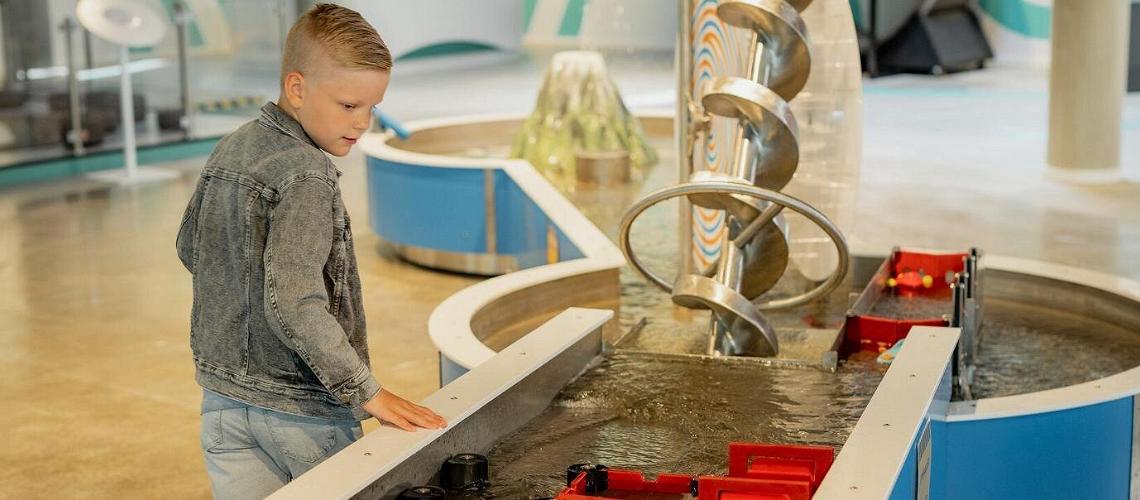
Keep the littlest travelers busy at the WOW Family Attraction and Interactive Leisure Centre.
Photo by: Valmar VoolaidTravel to and from Saaremaa
Local transport to and around Saaremaa also has a small ecological footprint. The most common way to get to Saaremaa is by ferry, which you can board on foot, with a bicycle, car or even as part of a long-distance bus ticket, though there are direct flights from Tallinn airport. The ferry departs from Virtsu Harbour on the mainland and sails for about half an hour to Kuivastu Harbour on Muhu Island, which is connected to Saaremaa by a bridge. One of the two ferries sailing this route is the hybrid ferry Tõll. It uses 20% less diesel fuel, saves 1,600 tons of carbon dioxide from being emitted each year, and produces fewer vibrations and noise, which could disturb fish and marine life.
Public buses are free in Saaremaa County, including for tourists. You can spot them with the sign "FREE" in the window. Free public transport is mainly used by locals, but there are several buses per week to Kaali Crater and the Angla Windmills from Kuressaare. During the summer, visitors can also get to Mändjala, Keskrand or Järve Beaches on busses that run several times daily. If you prefer to explore by bike instead, Saaremaa is a great place for it with its flat terrain and quiet roads.






